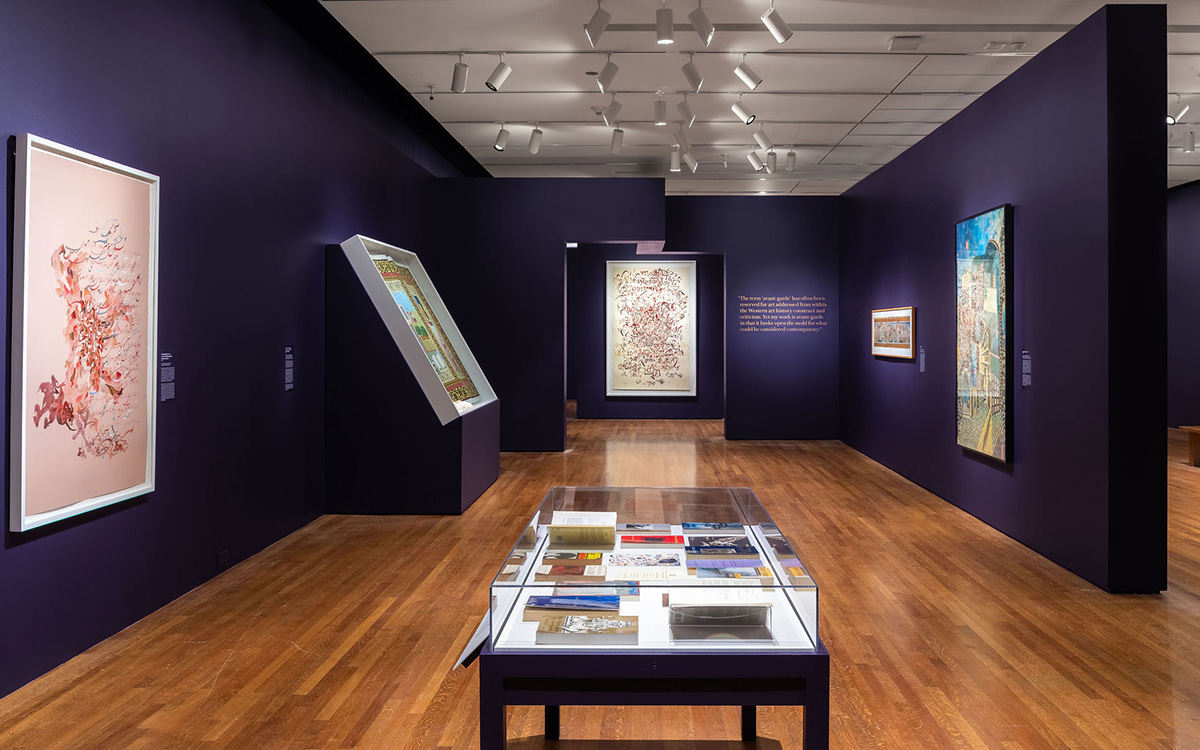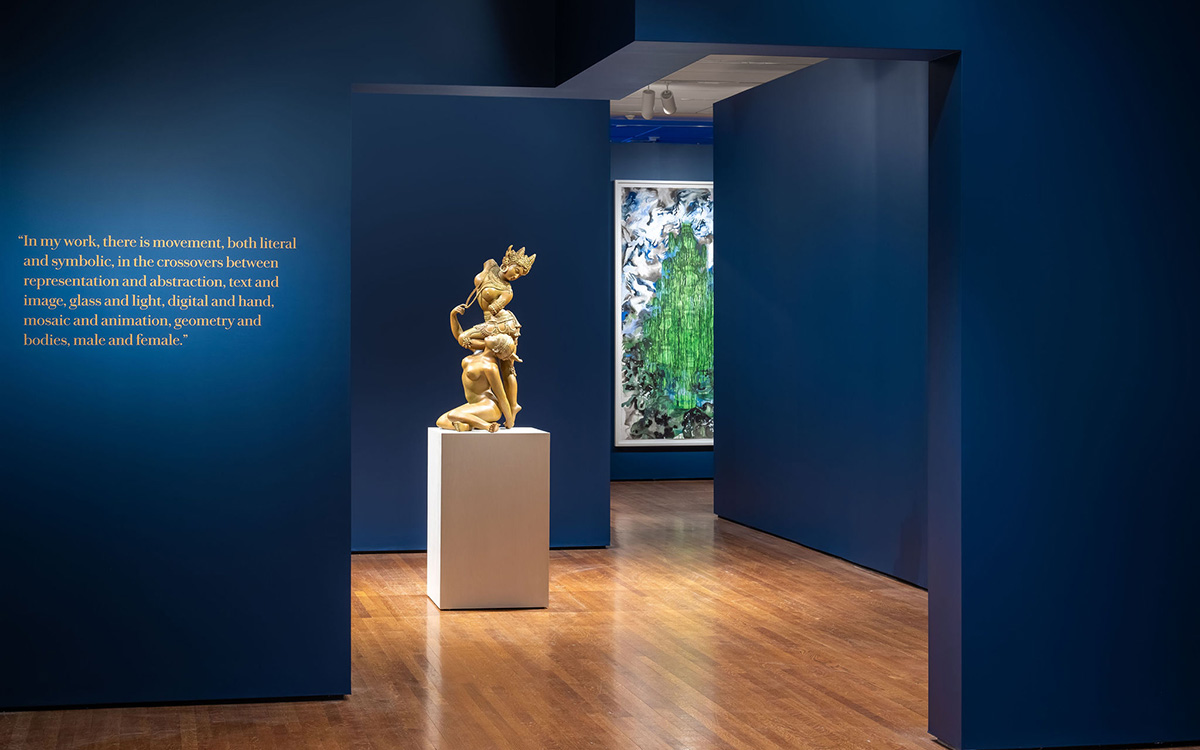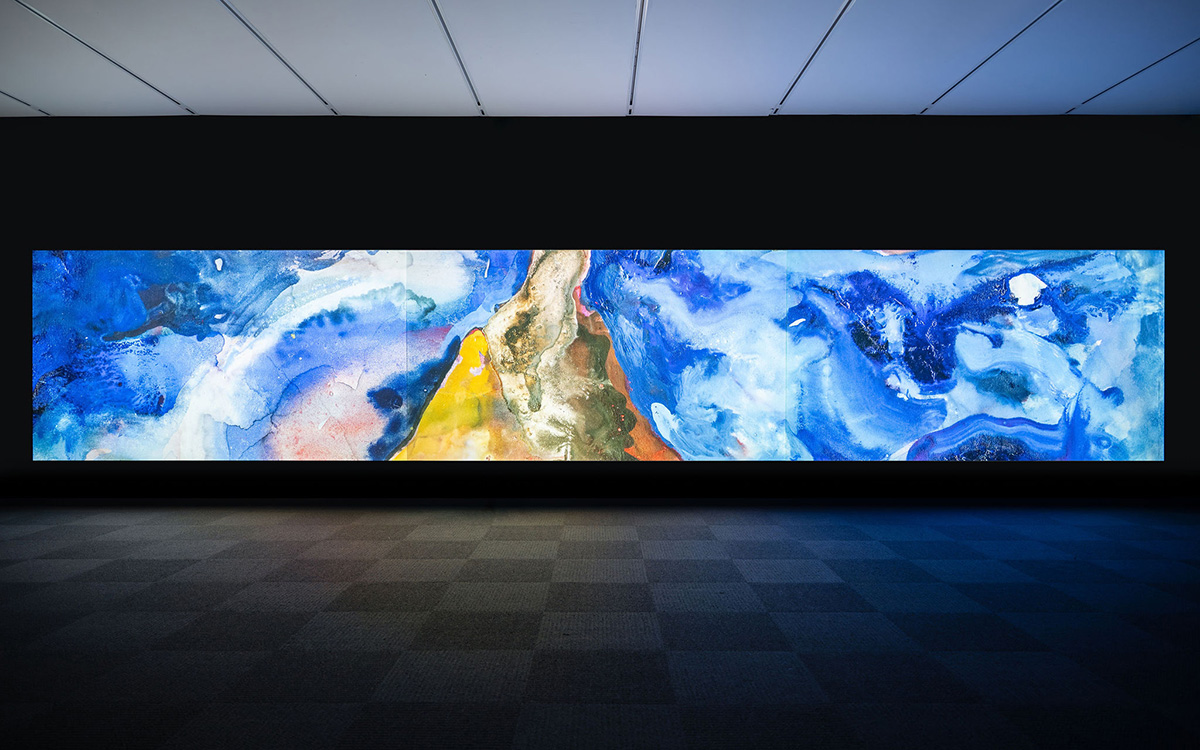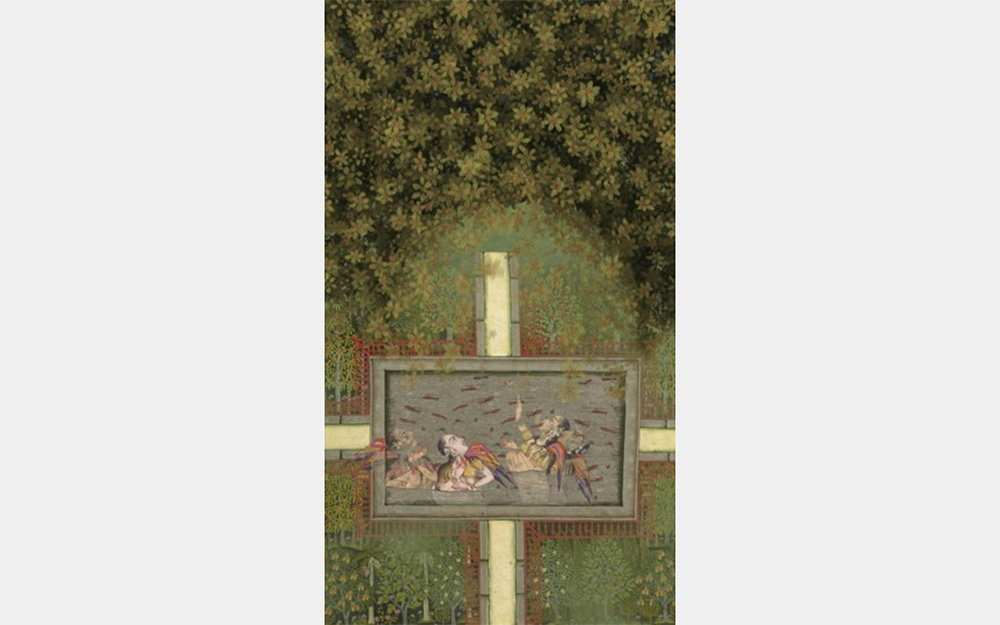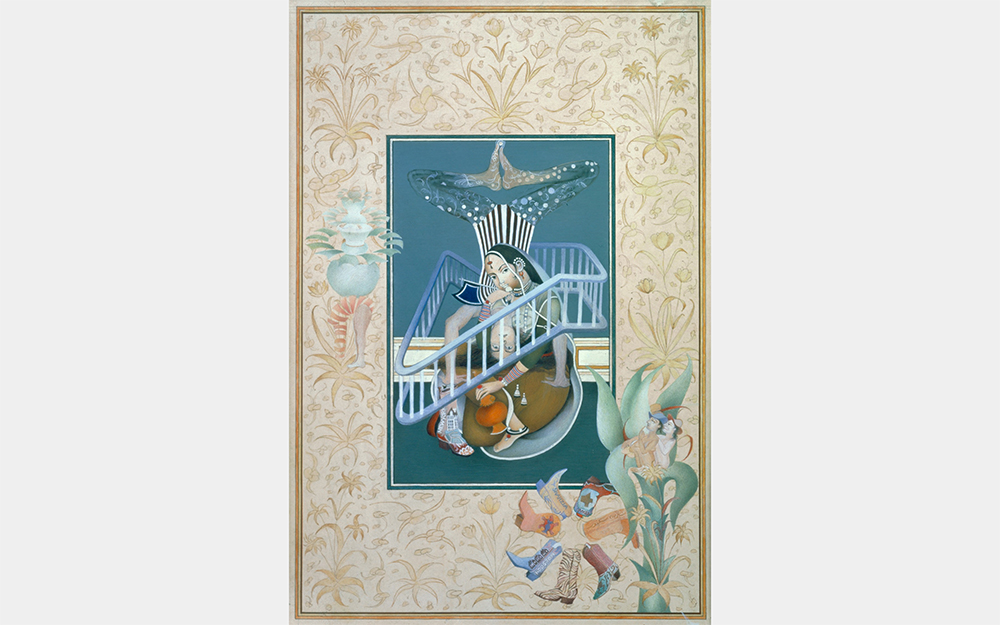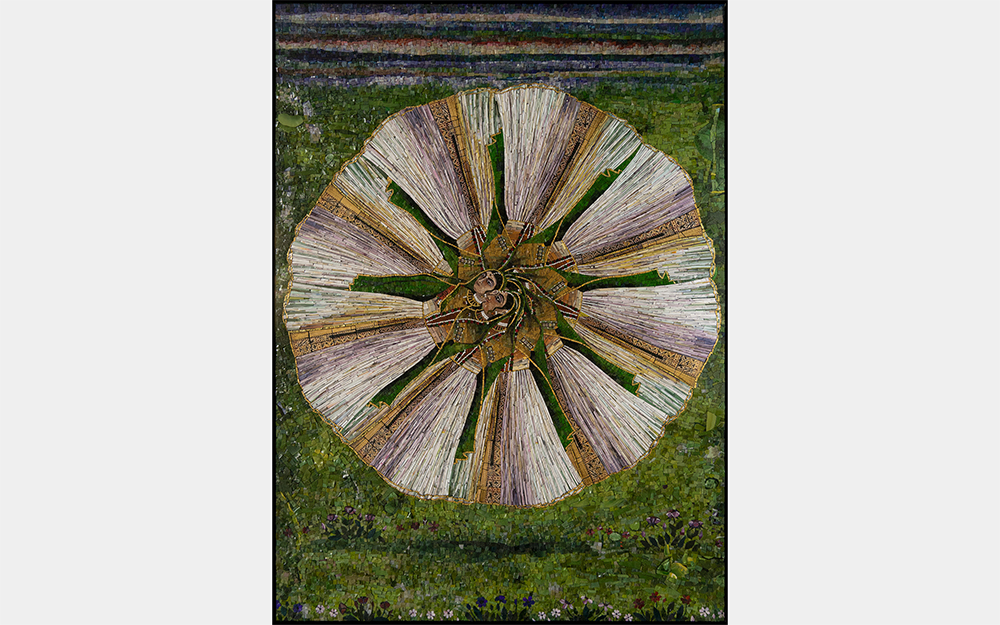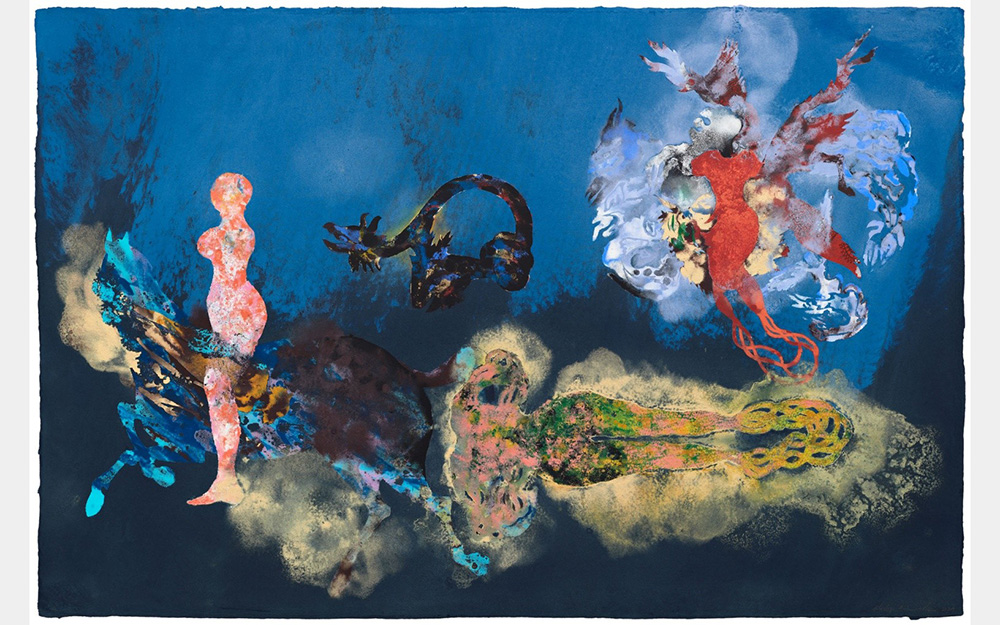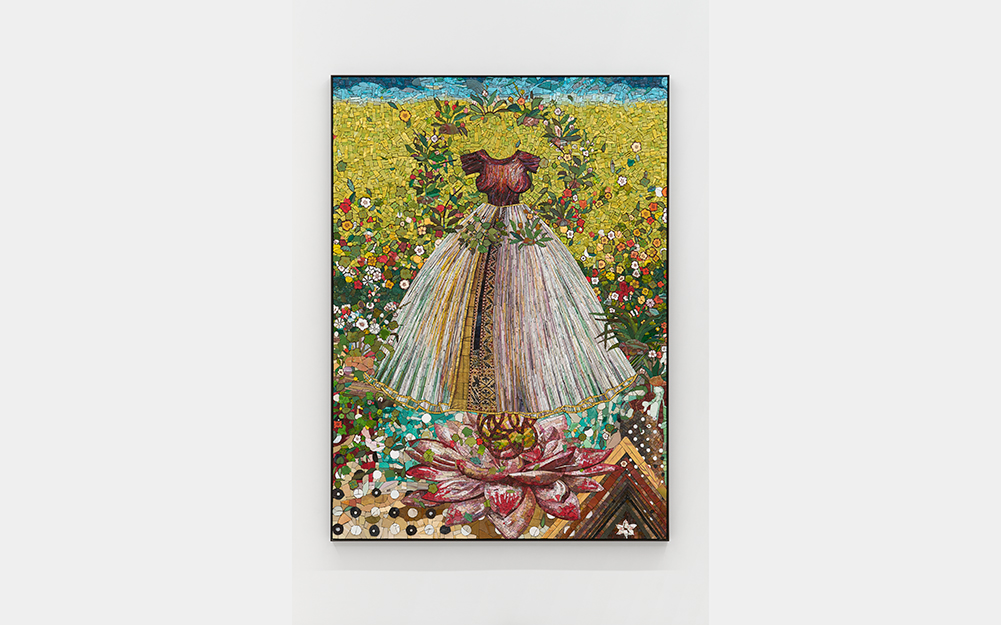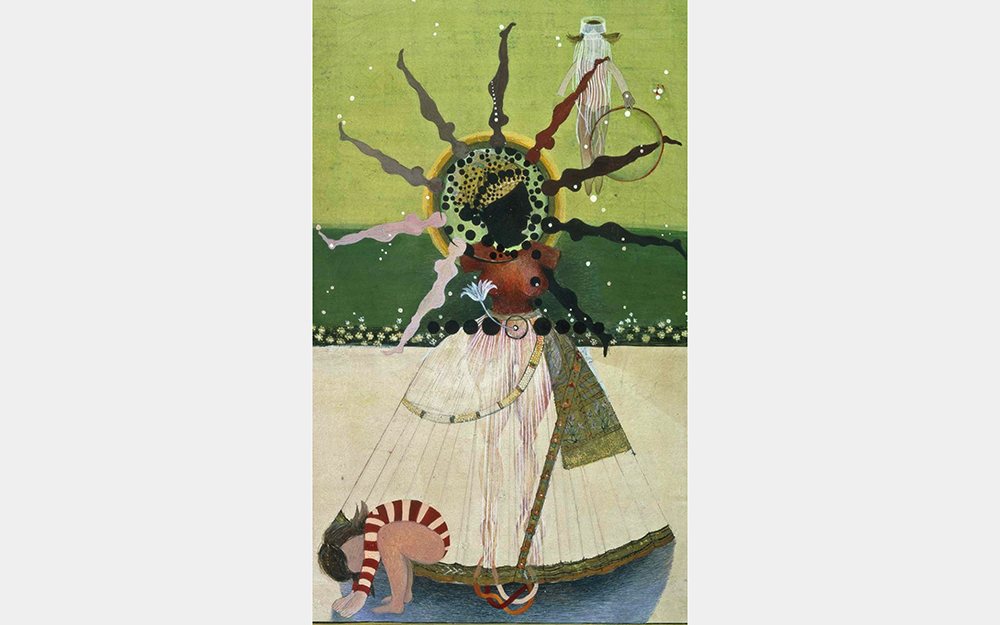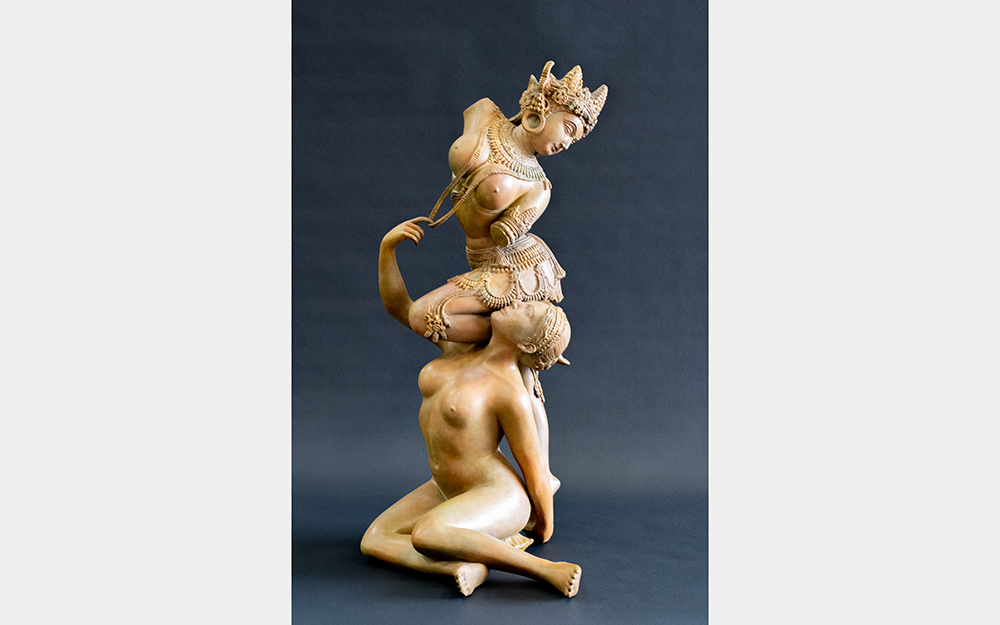- Art
- Exhibitions
- Farm to Table: Food and Identity in the Age of Impressionism
- Cycle Thru! The Art of the Bike
- Tintoretto’s Genesis
- Upcoming Exhibitions
- Online Exhibitions
- Special Features
- Past Exhibitions
- Explore the Collection
- Provenance and Cultural Property
- Conservation
- Meet the Curators
- Digital Resources
- Art Bridges Cohort Program
Shahzia Sikander: Collective Behavior
February 14–May 4, 2025
Western & Southern Galleries (Galleries 232 and 233)
Ticketed. Free for Members. Save $2 when purchasing tickets online.
Friends of South Asian Art, Islamic Art and Antiquities
Read the Press Release
See the exhibition for free on Thursday nights from 5–8 p.m.; during CAM Kids Day on Saturday, March 1 and Saturday, April 5; during Art After Dark on Friday, February 28, Friday, March 28 and Friday, April 25 from 5–9 p.m.; from March 25–28; and Tuesday, April 1, Tuesday, April 8, and Tuesday, April 15.
One ticket, two exhibitions! If you buy a ticket for Shahzia Sikander: Collective Behavior from April 4–May 4, 2025, you can use that same ticket to see Cycle Thru! The Art of the Bike!
The Cincinnati Art Museum presents Shahzia Sikander: Collective Behavior, a career-spanning exhibition of the internationally renowned, New York-based artist. For more than three decades, Shahzia Sikander (born 1969, Lahore, Pakistan) has been reframing South Asian visual histories through a contemporary feminist perspective. Working in a variety of mediums—painting, drawing, print, digital animation, mosaic, sculpture, and glass—she reimagines the past for our present moment. Throughout her practice, she considers diasporic experiences, histories of colonialism, and Western relations with the global south and the wider Islamic world, often through the lens of gender and body politics.
Rather than proceeding chronologically, Collective Behavior follows Sikander’s primary ideas and inquiries throughout her work, rooted as they are in a recurring lexicon of forms, figures, and ideas. The exhibition explores Sikander’s role as an American artist, a Pakistani artist, a Muslim artist, a feminist artist, and—perhaps most significantly—as a global citizen engaging with a disrupted historical narrative.
Shahzia Sikander: Collective Behavior premiered as a Collateral Event of the 60th International Art Exhibition—La Biennale di Venezia, co-organized by the Cincinnati Art Museum and the Cleveland Museum of Art. After Venice, complementary iterations of the exhibition open across Ohio. CAM’s iteration of Collective Behavior is the largest and most comprehensive presentation of Sikander’s remarkable career.
Shahzia Sikander: Collective Behavior is accompanied by a vividly illustrated catalogue featuring scholarly and poetic responses to the artist’s work.
Featured Media
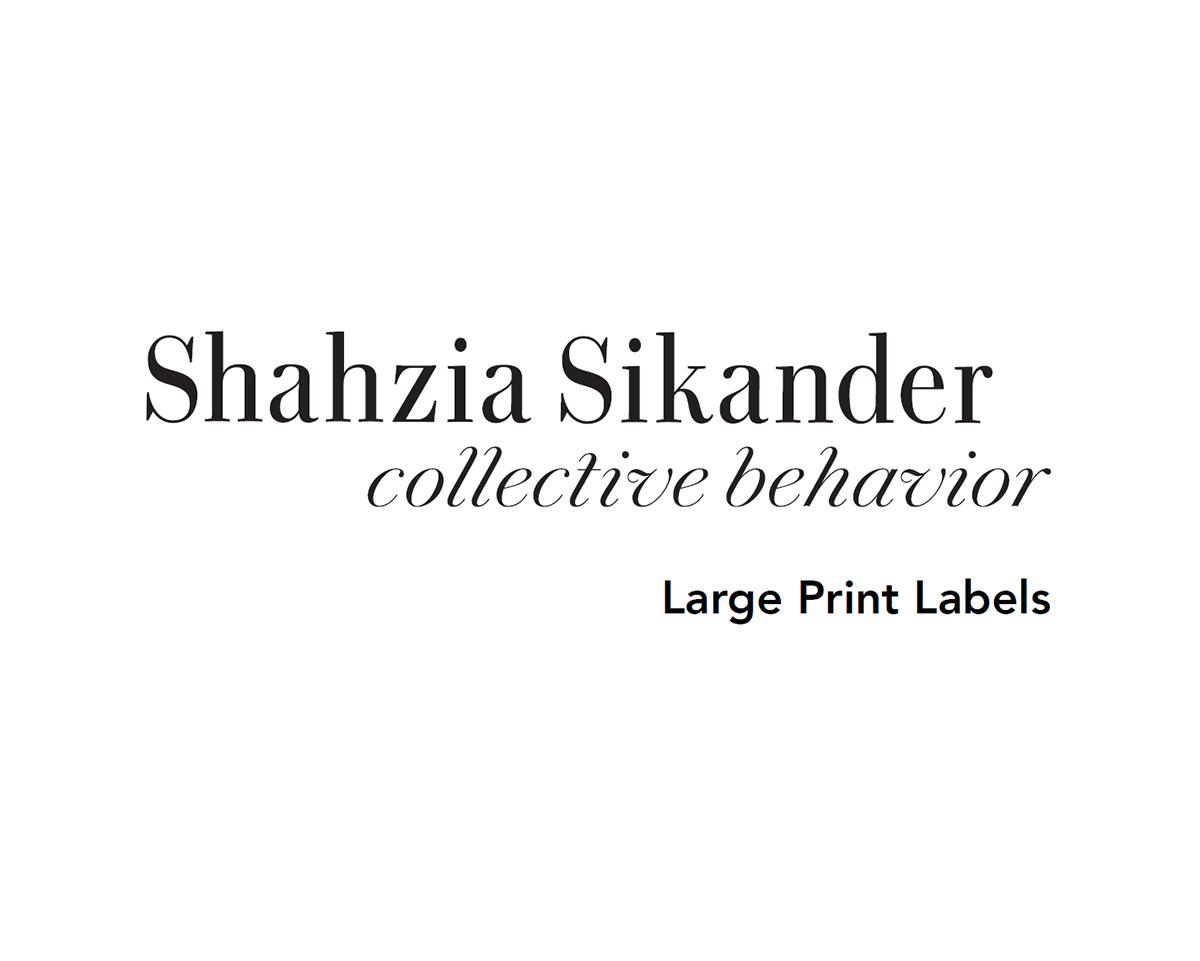 Exhibition Content
Exhibition Content
Download complete Shahzia Sikander large print labels, optimized for screen reader. Large print labels are also available in print in the gallery.
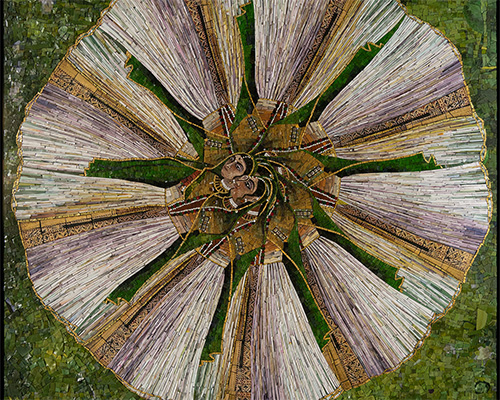 Survey
Survey
Share your feedback about the exhibition.
Hear verbal descriptions of highlighted artworks and interpretive content for the exhibition, wherever you are.
Shahzia Sikander — DAAP Visiting Artists and Scholars Lecture Series (offsite)
Wednesday, February 5, 2025, 12:30–1:30 p.m.
DAAP Aronoff 5401, 342 Clifton Ct., Cincinnati, Ohio 45221
Members Opening
Thursday, February 13, 2025, 5–7 p.m.
CAM Kids Day: Discover Yourself in Art
Saturday, March 1, 2025, 11 a.m.–3 p.m.
Art on The Rise
Saturday, March 8, 2025, 1–3 p.m.
Art After Dark: Girl Powered
Friday, March 28, 2025, 5–9 p.m.
10th Annual Asian Art Lecture – Shahzia Sikander: Collective Behavior
Sunday, April 6, 2025, 2–3 p.m.
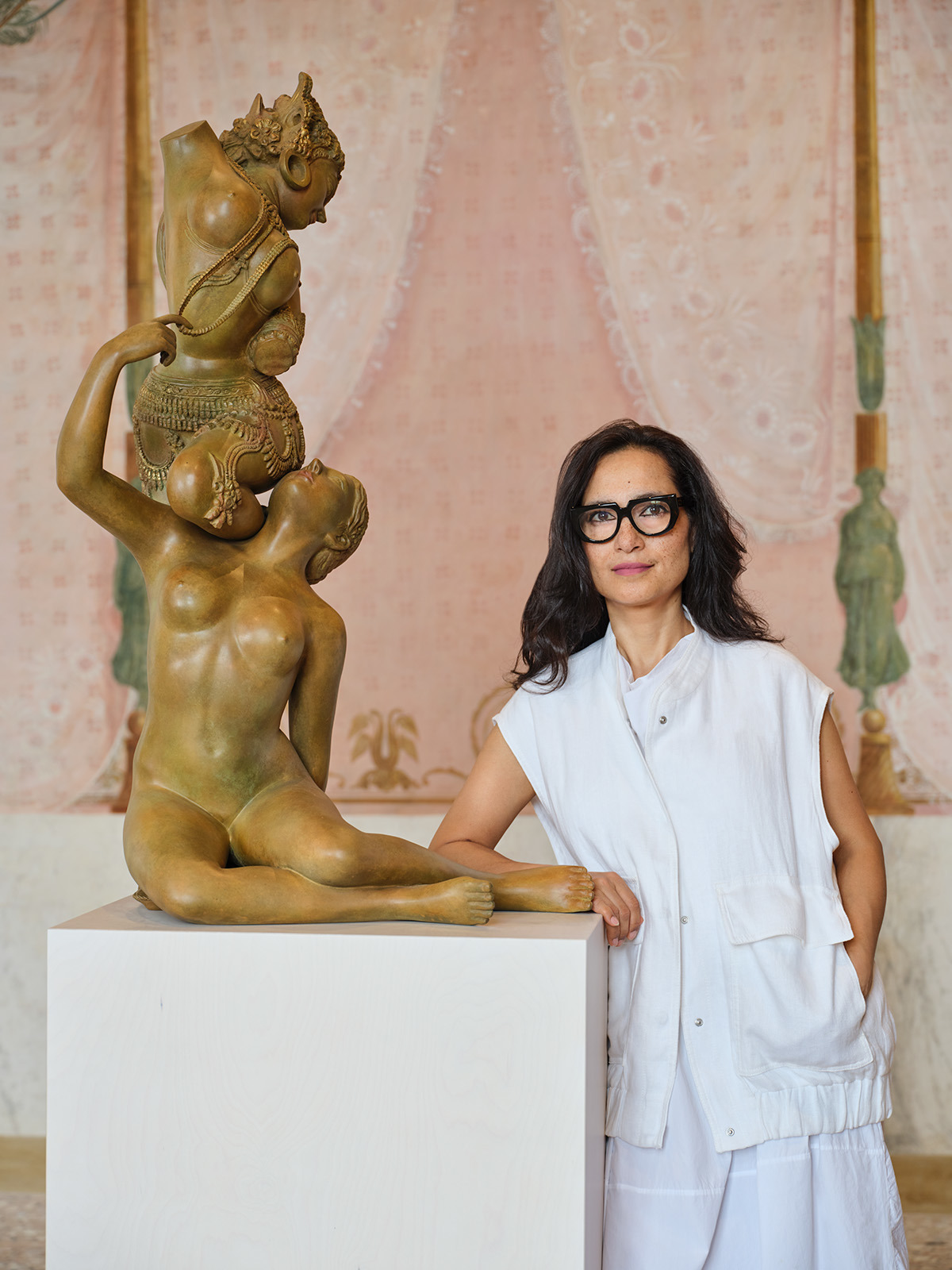
Shahzia Sikander is widely celebrated for subverting Central and South-Asian manuscript painting traditions and launching the form known today as neo-miniature. Born in Lahore, Pakistan, Sikander earned a B.F.A. in 1991 from the National College of Arts (NCA) in Lahore. Sikander’s breakthrough work, The Scroll, 1989–90, received national critical acclaim in Pakistan and brought international recognition to this medium within contemporary art practices in the 1990s. Sikander received her M.F.A. at the Rhode Island School of Design in 1995. Over the subsequent twenty plus years, Sikander’s practice - which has expanded to include paintings, media work and most recently, sculpture, has been pivotal in showcasing art of the South Asian diaspora as a contemporary American tradition.
Sikander’s solo exhibitions include the Museum of Fine Arts, Houston in Texas; the Morgan Library and Museum in New York; the RISD Museum in Providence, Rhode Island; Jesus College in Cambridge, United Kingdom; the MAXXI National Museum of 21st Century Art in Rome; the Guggenheim Museum in Bilbao, Spain; the Museum of Contemporary Art in Sydney; the Hirshhorn Museum in Washington, D.C.; and the Whitney Museum of American Art, among many others. Sikander has also been featured in group exhibitions, most recently at the Royal Academy of Arts in London, and other international venues, including the Sharjah Biennial 11; the 8th and 13th Istanbul Biennials; the National Portrait Gallery in Washington DC; the Museum of Modern Art in New York; the Museum of Contemporary Art in Tokyo; the 54th Venice Biennale in Italy; and the Whitney Biennale in 1997, among others. Sikander has been the recipient of many notable awards, including most recently the Pollock Prize for Creativity in 2023, the Fukuoka Arts and Culture Prize in 2022, the Asia Society Award for Significant Contribution to Contemporary Art in 2015, a medal of Art by the U.S. Department of State in 2012, and a MacArthur Fellowship in 2006. Sikander’s work is in the collections of all major national and international museums, and permanent site-specific public artworks include the University of Houston, Princeton University, the Cincinnati Art Museum and Johns Hopkins University. Sikander serves on the boards of Art21, the Rhode Island School of Design, and the Institute of Fine Arts, New York University, and is a member of the Asian American Arts Alliance’s artist council. In Spring of 2023, Sikander served as an adjunct professor at Columbia University's Institute for Comparative Literature and Society, and more recently in Spring of 2024, as an adjunct professor at Brown University’s Department of the History of Art & Architecture. She is currently an adjunct professor for Fall of 2024 at Columbia University, and the Alan Kanzer Artist-in-Residence at Columbia's Zuckerman Institute of Mind, Brain and Behavior. In conjunction with her traveling exhibition, an extensive monograph examining Sikander’s work entitled Extraordinary Realities was published in 2021 by Hirmer Publishers and The University of Chicago Press.
Sikander's major outdoor project, NOW, an 8-foot bronze female sculpture, is permanently installed on the roof of the Appellate Courthouse in Manhattan. An accompanying 18-foot female sculpture, Witness, was exhibited in Madison Square Park in 2023, and has since travelled to the University of Houston. The second edition of NOW was acquired by The Newark Museum of Art in 2023. Sikander’s animation Reckoning, her second display as part of Times Square’s Midnight Moment, and Singing Suns, displayed across screens in Moynihan Train Hall from November 2023 to January 2024, have been a part of two recent major public art programs. A survey exhibition, Shahzia Sikander: Collective Behavior, co-organized by the Cleveland Museum of Art and Cincinnati Art Museum as a Collateral Event of the 60th International Art Exhibition - La Biennale di Venezia, will be on view until October 20th, 2024, before complementary iterations are presented in parallel at both Ohio institutions.
Photograph by Agostino Osio
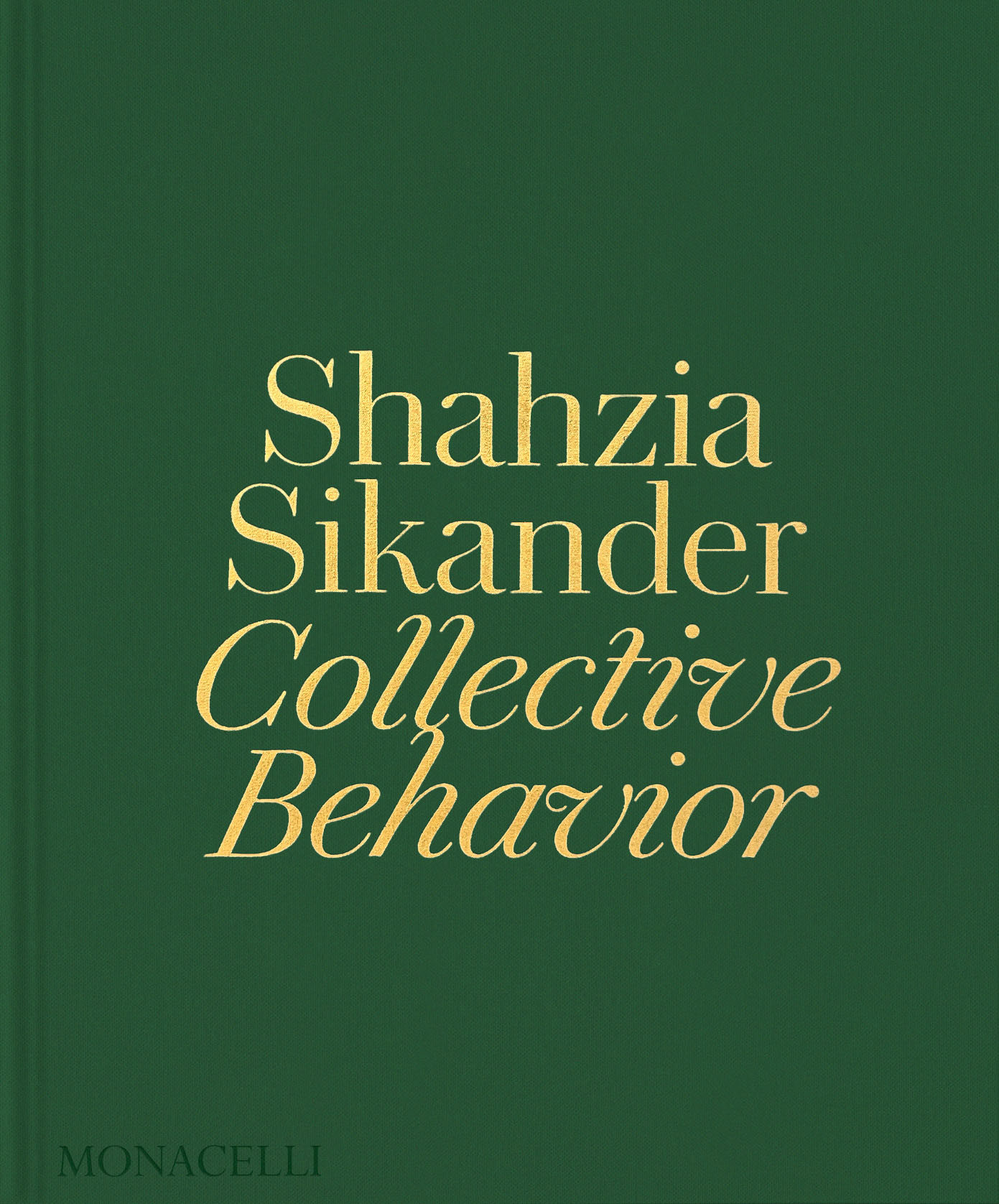 Shahzia Sikander: Collective Behavior is accompanied by a richly illustrated catalog, published by Monacelli, featuring scholarly and poetic responses to Sikander’s work by contributors including Manan Ahmed, Aruna D’Souza, Bhanu Kapil, Rosalind C. Morris, Fred Moten, and Victoria Sung. The definitive publication on the internationally acclaimed artist, the catalog is available for order at Amazon, Bookshop.org, or Barnes and Noble. Also find it in our Museum Shop.
Shahzia Sikander: Collective Behavior is accompanied by a richly illustrated catalog, published by Monacelli, featuring scholarly and poetic responses to Sikander’s work by contributors including Manan Ahmed, Aruna D’Souza, Bhanu Kapil, Rosalind C. Morris, Fred Moten, and Victoria Sung. The definitive publication on the internationally acclaimed artist, the catalog is available for order at Amazon, Bookshop.org, or Barnes and Noble. Also find it in our Museum Shop.
To accompany the publication of the catalog, Artspace is releasing a limited-edition print of Sikander’s Her-Vimana to support the presentations of Collective Behavior at CAM and the CMA. To purchase the print, visit the Artspace webpage.
Shahzia Sikander: Collective Behavior is made possible through generous funding from the Terra Foundation for American Art, The Andy Warhol Foundation for the Visual Arts, the National Endowment for the Arts, and presenting sponsor Kenneth J. Birdwell.
 |
 |
 |
Exhibition support provided by

Additional support comes from the John and Dorothy Hermanies Fund; Louise H. and David S. Ingalls Foundation; Robert Lehman Foundation; Albert B. Cord Charitable Foundation; Pace Prints, New York; Twelve Gates Arts; anonymous donors, Shakila T. Ahmad; Tanu Bhati; Saba A. Chughtai; Julie and Abhijit Desai; Liz Grubow and Jerry Kathman; JoLynn and Byron Gustin; Syed Zubair Haq; Alina Khan; Zofeen Khan; Samar Kaukab and Haroon Moghul; Helen Little; Soumya S. Patnaik; Ron Pizzuti; Kristi Nelson and Stewart Goldman; and Sara M. Vance Waddell.
Shahzia’s two principal commercial galleries, Sean Kelly Gallery and Pilar Corrias Gallery, have been invaluable supporters and collaborators.



